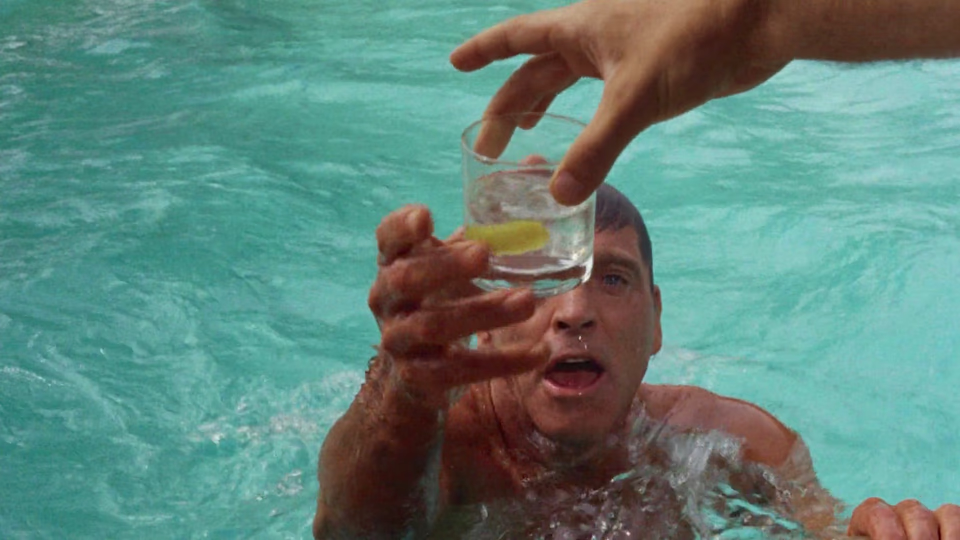The Swimmer

Burt Lancaster’s Ned Merrill emerges from the woods and dives into a friend’s pool with the confidence of a man who owns the world. His blue eyes sparkle. His smile disarms. He’s handed a martini, naturally.
Then comes his odd quest: to “swim home” through the county’s backyard pools. But what begins as whimsy becomes something far more sinister.
Lancaster carries this film in nothing but swim trunks. It’s a nakedness that becomes metaphorical. His physical perfection—toned but lived-in—mirrors the polished veneer of his character’s life.
The genius lies in the slow reveal. Director Frank Perry trusts us to assemble the fragments of Ned’s story ourselves. Each pool brings another piece of the puzzle. Each encounter strips away another layer of the carefully constructed image.
Watch Lancaster’s subtle transformation. First comes a slight limp. Then he hunches against imaginary cold. “What’s the matter with that sun?” he asks. “There’s no heat in it.” By the final frames, even those piercing blue eyes have gone dull and haunted.
The cynicism cuts deep. As Ned nears home, the parties grow gaudier, the receptions grow colder, and Ned grows smaller. We piece together his true story: the lower-class opportunist who married money, confused acquisition with achievement, popularity with friendship, and image with identity.
It’s Dante in swimming trunks—a journey through the circles of suburban hell.
The film’s final gut-punch lingers. Nearly sixty years later, its portrait of empty American success still feels disturbingly fresh. Those pools may be long gone, but we’re still swimming in those same deceptive waters.